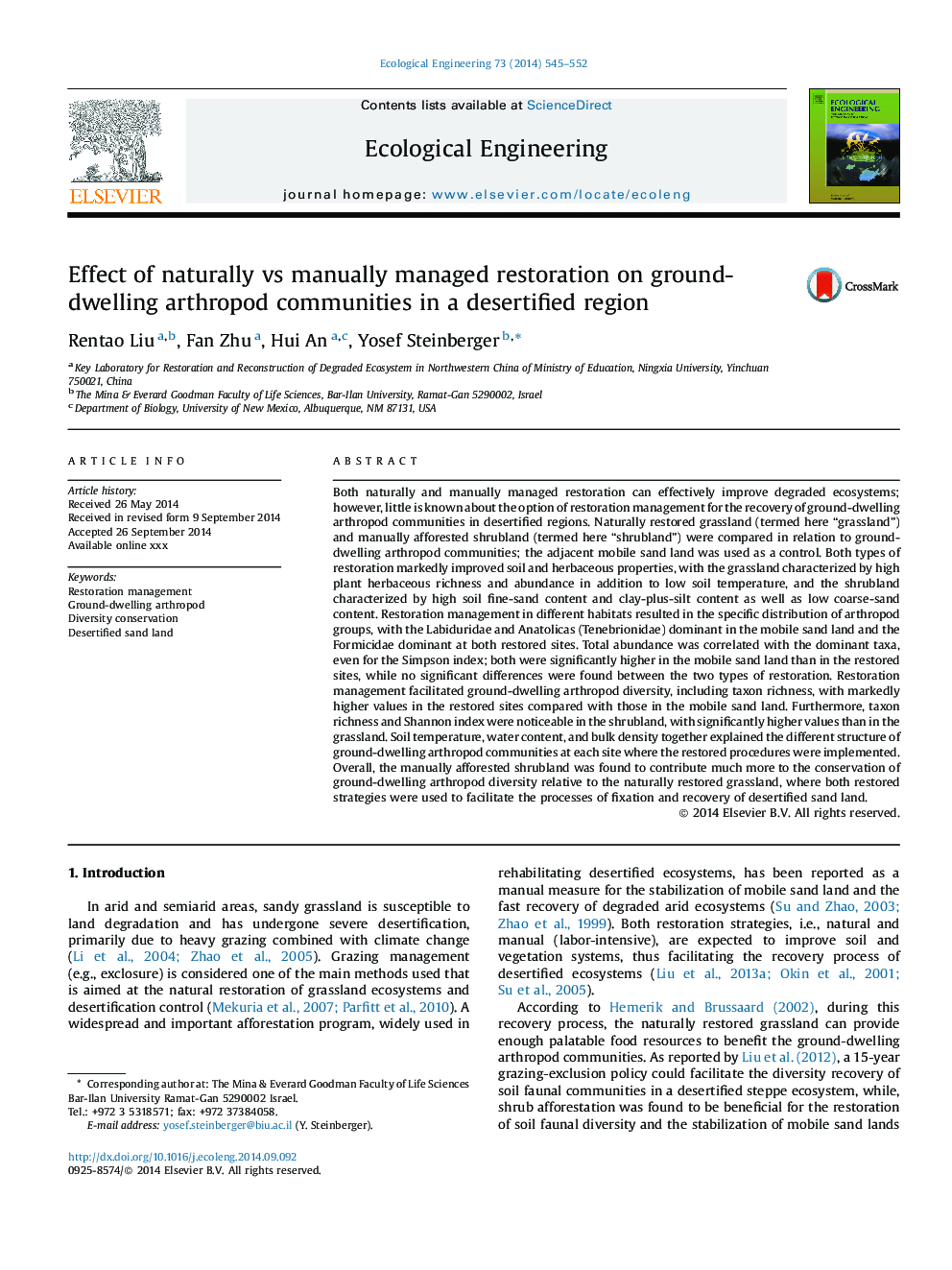| کد مقاله | کد نشریه | سال انتشار | مقاله انگلیسی | نسخه تمام متن |
|---|---|---|---|---|
| 6302004 | 1618026 | 2014 | 8 صفحه PDF | دانلود رایگان |
عنوان انگلیسی مقاله ISI
Effect of naturally vs manually managed restoration on ground-dwelling arthropod communities in a desertified region
ترجمه فارسی عنوان
اثر طبیعی به جای دستی بازسازی مدیریت شده بر جوامع شهری محل زندگی در یک منطقه خالی از سکنه
دانلود مقاله + سفارش ترجمه
دانلود مقاله ISI انگلیسی
رایگان برای ایرانیان
کلمات کلیدی
مدیریت ترمیم، وابسته به زمین شهری، حفاظت از تنوع زمین شن و ماسه بیابان زده،
موضوعات مرتبط
علوم زیستی و بیوفناوری
علوم کشاورزی و بیولوژیک
بوم شناسی، تکامل، رفتار و سامانه شناسی
چکیده انگلیسی
Both naturally and manually managed restoration can effectively improve degraded ecosystems; however, little is known about the option of restoration management for the recovery of ground-dwelling arthropod communities in desertified regions. Naturally restored grassland (termed here “grassland”) and manually afforested shrubland (termed here “shrubland”) were compared in relation to ground-dwelling arthropod communities; the adjacent mobile sand land was used as a control. Both types of restoration markedly improved soil and herbaceous properties, with the grassland characterized by high plant herbaceous richness and abundance in addition to low soil temperature, and the shrubland characterized by high soil fine-sand content and clay-plus-silt content as well as low coarse-sand content. Restoration management in different habitats resulted in the specific distribution of arthropod groups, with the Labiduridae and Anatolicas (Tenebrionidae) dominant in the mobile sand land and the Formicidae dominant at both restored sites. Total abundance was correlated with the dominant taxa, even for the Simpson index; both were significantly higher in the mobile sand land than in the restored sites, while no significant differences were found between the two types of restoration. Restoration management facilitated ground-dwelling arthropod diversity, including taxon richness, with markedly higher values in the restored sites compared with those in the mobile sand land. Furthermore, taxon richness and Shannon index were noticeable in the shrubland, with significantly higher values than in the grassland. Soil temperature, water content, and bulk density together explained the different structure of ground-dwelling arthropod communities at each site where the restored procedures were implemented. Overall, the manually afforested shrubland was found to contribute much more to the conservation of ground-dwelling arthropod diversity relative to the naturally restored grassland, where both restored strategies were used to facilitate the processes of fixation and recovery of desertified sand land.
ناشر
Database: Elsevier - ScienceDirect (ساینس دایرکت)
Journal: Ecological Engineering - Volume 73, December 2014, Pages 545-552
Journal: Ecological Engineering - Volume 73, December 2014, Pages 545-552
نویسندگان
Rentao Liu, Fan Zhu, Hui An, Yosef Steinberger,
